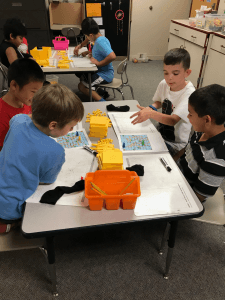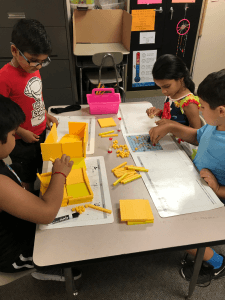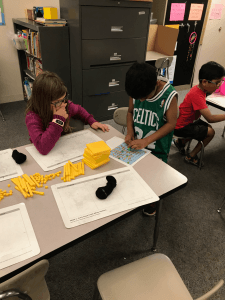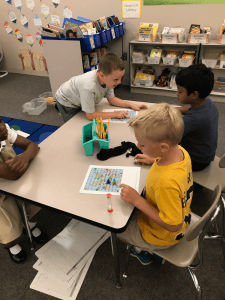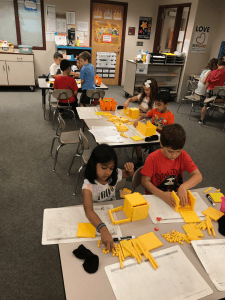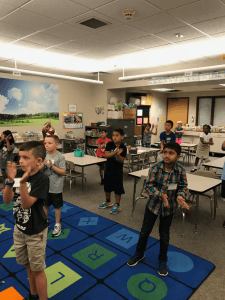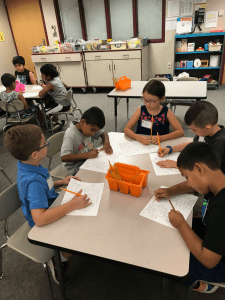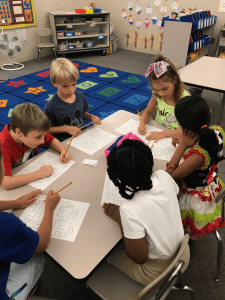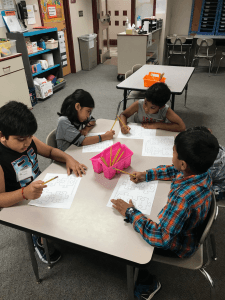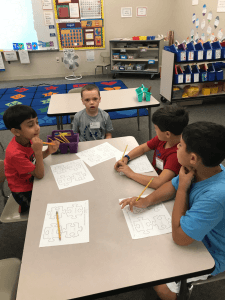Posted by kavery508 | Posted in Uncategorized | Posted on September 24, 2018
 The Grade 2 Field Trip is coming! On Friday, October 19, our class will be traveling back in time on a visit to Old Sturbridge Village. The permission slip and fee request will be sent home at the beginning of October. I’m posting this in advance, to encourage dads and moms who can’t typically volunteer for daytime school activities to plan to join us as chaperones on that day. Our class needs 1 more chaperone, charged at the student rate of $20. Please contact me if you are interested.
The Grade 2 Field Trip is coming! On Friday, October 19, our class will be traveling back in time on a visit to Old Sturbridge Village. The permission slip and fee request will be sent home at the beginning of October. I’m posting this in advance, to encourage dads and moms who can’t typically volunteer for daytime school activities to plan to join us as chaperones on that day. Our class needs 1 more chaperone, charged at the student rate of $20. Please contact me if you are interested.
A current CORI check is required for chaperones. If you need one done, this is the week to do it as it typically takes 3 weeks for them to get back to us.
The educational purpose of the trip is to investigate and learn about economics in a hands-on way, through the lens of local history. We will examine how wants and needs affect the goods and services provided to consumers of a community, and each student will produce an artifact to bring home. This place is a unique gem, similar to Plimoth Plantation, that I encourage everyone to make it part of your weekend repertoire. To learn more and take a virtual tour, visit: https://www.osv.org/
 Fall Festival: If you can’t join us on the field trip, consider coming for Fall Festival. In lieu of Halloween parties, our school engages kids with activities and crafts around fall and halloween. We need 2 more parent volunteers to help run crafts on Wednesday, October 31, 9:30-11:00. Please let me know if you can help out!
Fall Festival: If you can’t join us on the field trip, consider coming for Fall Festival. In lieu of Halloween parties, our school engages kids with activities and crafts around fall and halloween. We need 2 more parent volunteers to help run crafts on Wednesday, October 31, 9:30-11:00. Please let me know if you can help out!
Math Homework Starts This Week: The district’s recommendation is 20 minutes of homework in grade 2, exclusive of reading. Since students work at different speeds, if you find your child has worked diligently but is hitting a frustration level when time is up, you can stop there and jot a note on the page.
Every night, your child should bring home a blue “Math Homework Resources” folder, in addition to the green communication folder. In the front pocket will be a stapled packet with all 4 nightly assignments. The pages are pre-dated and sometimes they will be double-sided. Students should complete each night’s work; put the packet back in the front pocket; and return the folder the next day along with the green folder. Each morning, I will check the homework and students will return the packets to the folder.
In addition to the packet, there will be 2 optional homework pages sent home each week, marked “Optional Challenge” at the top. They will be placed in the back pocket of the math homework folder. They are great for kids who are ready to think more deeply and broadly about the math concepts we’re working on, and who finish other homework early–but they’re great for everyone else, too! In any case, these pages are not required work; as such, they can be returned any day of the week or not at all.
The pages in the center of the homework folder are there for several reasons. There are vocabulary pages that remind students of the math terms taught in class that they are expected to know (and that show up on homework and tests). You’ll also see sample pages copied from our math book that show how concepts are being taught, and what the homework is looking for students to do. You will also find pictures of base-10 blocks. These can be cut out and kept at home to help when students are stuck understanding and computing with 3-digit numbers, and any time the numbers involved prove too challenging to do it all mentally. I will add to the pages periodically throughout the year.
Regarding how much help to give your child: Please DO help read directions if s/he needs it. Then ask how s/he thinks they should go about solving items. Remind them about using resources in the folder when writing words, etc., and by all means help them if they’re stuck or need a hand getting started. Please DON’T write answers for your child.
The first two nights of homework introduces students to strategies for mental addition. Since this approach is new to most of us grownups, I’ve made a video demonstrating them:
For additional fun practice, students can use the Greg Tang game Break Apart (see link under “Student Resources” above). Select “Addition”; choose which strategy; and click “easy” or “hard”.


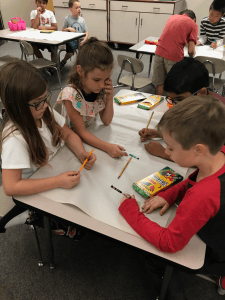
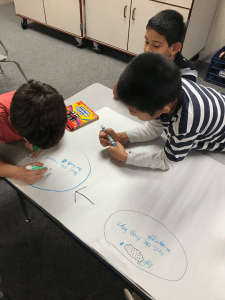
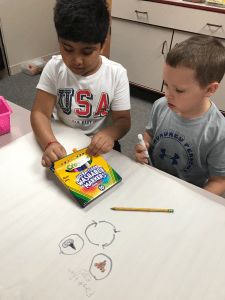
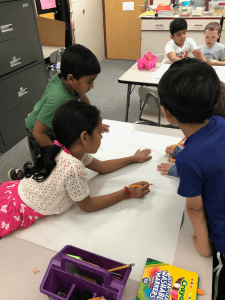
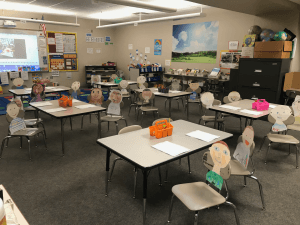


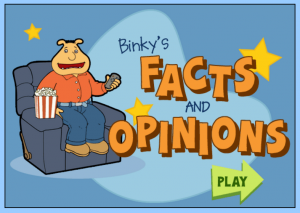




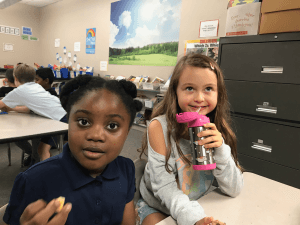

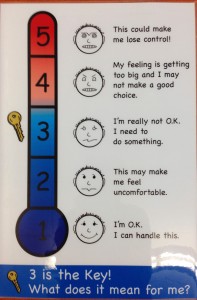 Self regulation is at the heart of teaching children to care and building a learning community. To help them achieve it, students are being taught to monitor their emotions using a social thinking thermometer. Notice the key? We say “3 is the key,” meaning it’s time to ask for help or use a strategy. One such strategy with proven success is yoga for kids. We’ve been practicing poses that focus on breathing and bringing down the temperature on our thermometers! For more on the importance of breathing for self-regulation,
Self regulation is at the heart of teaching children to care and building a learning community. To help them achieve it, students are being taught to monitor their emotions using a social thinking thermometer. Notice the key? We say “3 is the key,” meaning it’s time to ask for help or use a strategy. One such strategy with proven success is yoga for kids. We’ve been practicing poses that focus on breathing and bringing down the temperature on our thermometers! For more on the importance of breathing for self-regulation, 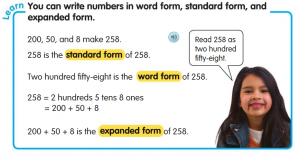 The math focus this week is all about numbers: how to understand them using their place value; how to recognize and identify them in standard, word, and expanded form; and how to add/count by 1s, 10s, and 100s by understanding the value of each digit. It is especially important that students develop an understanding of the hundreds, tens, and ones involved in these numbers. They will engage in various activities with base ten blocks, base ten pictures, and with written numbers. For practice at home, I recommend the online learning games (also available as an app) at ABCYa.com. Link to the
The math focus this week is all about numbers: how to understand them using their place value; how to recognize and identify them in standard, word, and expanded form; and how to add/count by 1s, 10s, and 100s by understanding the value of each digit. It is especially important that students develop an understanding of the hundreds, tens, and ones involved in these numbers. They will engage in various activities with base ten blocks, base ten pictures, and with written numbers. For practice at home, I recommend the online learning games (also available as an app) at ABCYa.com. Link to the 